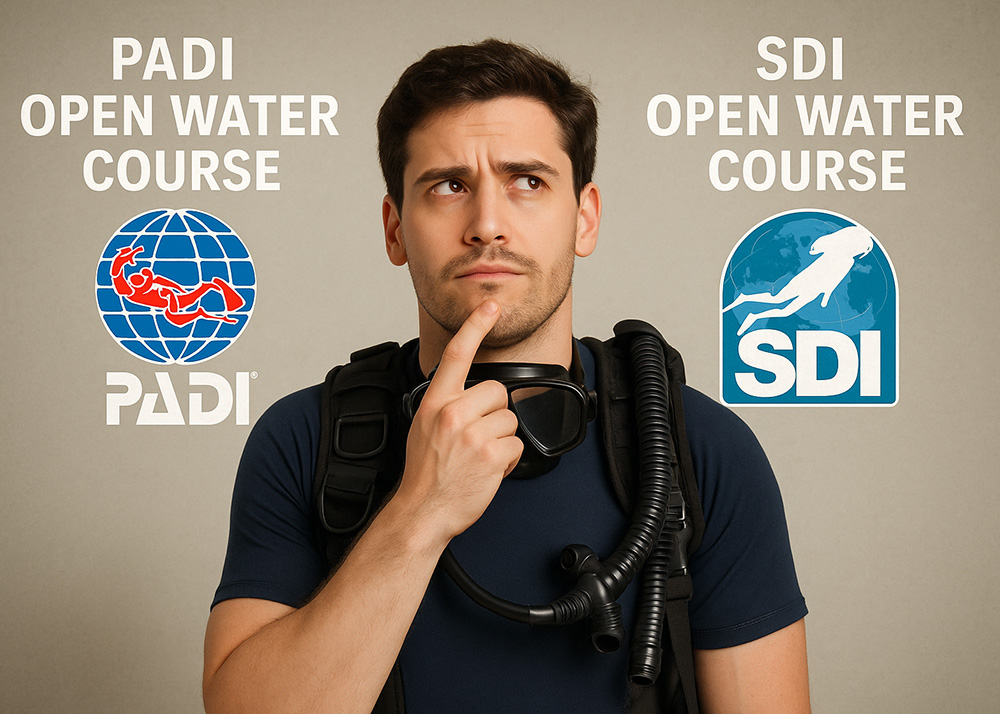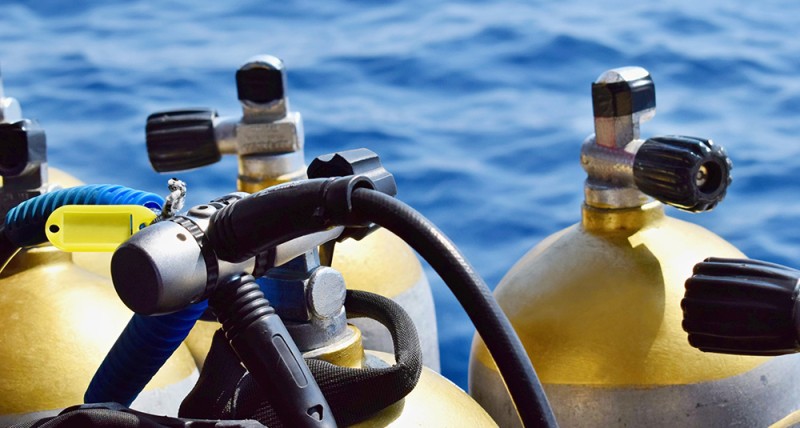As a professional scuba instructor, I often receive questions from prospective divers trying to decide between the PADI Open Water Diver certification and the SDI Open Water Scuba Diver certification. While both programs qualify a diver to descend to 60 feet (18 meters) and rent scuba equipment globally, there are meaningful differences in reputation, structure, cost, scalability, and even career trajectory. Choosing the right certification is more than a question of price—it’s a decision that can impact your experience and opportunities in the diving world.
An Automotive Analogy: Ford vs. Mercedes
To put it simply: both PADI and SDI will get you certified, just like a Ford and a Mercedes will both get you from point A to point B. But if you’re looking at long-term value, reputation, and the ability to advance seamlessly into higher levels of training or even a career in diving, the distinctions start to matter.
PADI is widely recognized as the global gold standard—like the Mercedes of dive training. It carries prestige, refined structure, and universal acceptance. SDI is reputable, growing, and efficient—perhaps comparable to a high-quality but less prestigious alternative, like a well-equipped Ford.
Global Recognition and Market Reach
PADI (Professional Association of Diving Instructors)
Founded in 1966, PADI has grown into the largest scuba certification agency in the world.
Recognized in more than 186 countries, it holds over 70% of global market share.
PADI cards are instantly recognized at nearly every dive shop, resort, or liveaboard in the world.
SDI (Scuba Diving International)
A division of TDI (Technical Diving International), SDI was founded in 1998 with a more modern and tech-forward approach.
Its certifications are widely accepted, especially in North America and Europe, but still not as universally recognized as PADI in more remote or conservative diving regions.
📌 If global ease-of-use and universal recognition are a priority, PADI remains unmatched.
Instructional Philosophy and Materials
PADI:
PADI offers a step-by-step modular approach that’s consistent across the world. Its eLearning is polished, intuitive, and multimedia-rich, often setting the industry standard.
Heavy emphasis is placed on standardized teaching, minimizing variation in the quality of instruction worldwide.
Materials are proprietary and tightly controlled, ensuring brand consistency.
SDI:
SDI was the first agency to allow electronic dive computers in training, and it often takes a more flexible and modern approach to course delivery.
Instructor discretion is greater, which can lead to a more customized student experience—but also more variability in quality.
SDI’s materials tend to be more affordable and less polished, though functional.
📌 If you value slick educational content and predictability, PADI delivers a premium experience. If you want instructor flexibility and modern pragmatism, SDI is compelling.
Cost Comparison
Costs will vary by instructor and region, but SDI is often cheaper for both students and instructors, making it appealing for budget-conscious divers and small dive businesses.
📌 If cost is a major factor, SDI is more affordable. If perceived prestige and standardized materials are more important, PADI justifies its higher price.
Advancement and Career Pathway
Here’s where the difference becomes most obvious:
PADI:
Offers a clear, well-known, and structured ladder from Open Water to Divemaster, Instructor, and even Course Director.
PADI Instructors are in higher demand globally, particularly at resorts, cruise lines, and international liveaboards.
Advanced certifications (e.g., Rescue Diver, Divemaster, Specialties) are integrated smoothly through its system.
SDI:
Also offers advanced courses, and ties in closely with TDI’s technical programs for divers pursuing deep or cave diving.
Professional pathway exists but not as widely recognized internationally.
Might require crossovers if divers want to work with certain operations that demand PADI credentials.
📌 If you envision a future in scuba instruction, guiding, or international dive work, PADI is the “default” resume builder. SDI is better for technically-minded divers who may want to explore beyond recreational limits.
Perception and Prestige
This matters—particularly in travel-based or luxury diving scenarios. PADI’s brand is synonymous with professionalism, safety, and quality. Dive operators in remote or exclusive destinations may only accept PADI-trained professionals or may favor PADI instructors for employment.
It’s not unusual for divers trained with other agencies to cross over to PADI when seeking Divemaster or Instructor ratings.
📌 In the eyes of many employers and peers, PADI represents “elite” recreational training.
Why Choose PADI?
You want global recognition with no questions asked.
You’re considering a long-term pathway in scuba—possibly to the instructor level.
You value structure, consistency, and prestige in your training.
You want to train or work abroad, or dive in remote luxury resorts.
Why Choose SDI?
You’re on a budget and want a reputable but more affordable certification.
You like the idea of flexibility and working closely with an instructor who tailors the experience.
You plan to dive locally or recreationally, with no immediate plans for professional advancement.
You’re interested in eventually doing technical diving through TDI.
Final Thoughts from an Instructor
Both PADI and SDI produce competent, safe, and confident divers when taught well. But in the world of diving, brand matters. PADI’s global reach, instructional quality, and professional trajectory continue to set the benchmark. As an instructor, I often tell students: If you’re just getting your feet wet, SDI is a solid start. But if you want to go far—PADI is the road most paved.




